Materials & Supplies
- Aubergine Silk Habotai (2 yards; $15.12/yd; $30.24 total) - Fashion Fabrics Club
At first I bought (cheap) black polyester for the lining, but then I realized the jacquard didn’t have any black on it, so I changed tactics and got the aubergine habotai, which is a better color match (although pricier). I’m glad I went with it, it’s much thinner and lightweight (although that makes it a pain to sew). - Neon Green, Maroon and Lavender Floral Jacquard (2 yards; $19.99/yd; $39.98 total) - Mood Fabrics
This jacquard is something else! The lime green parts almost glow when you look at this in the sunlight. I adore fluorescent colors like yellow and green (I have since I was a kid), however they look really bad on me when I wear them. This fabric is perfect because the neon green is not right against my skin so I get to enjoy looking at it, without being washed out by it! I bought it on a sale and am patiently waiting for another sale so I can try the other color combination (coral and blue, especially because I have the same issue with coral not being my color). - Medium weight interfacing
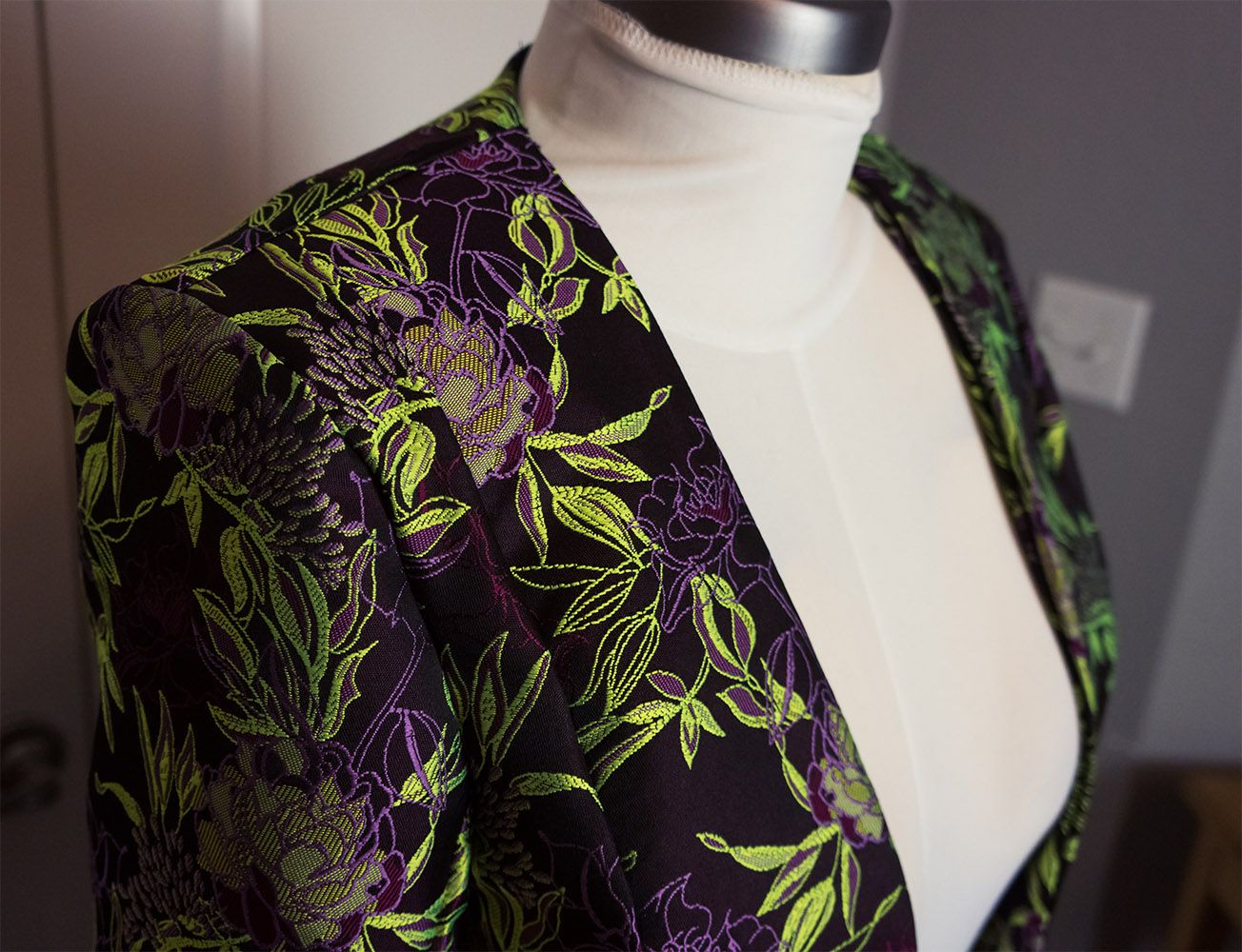
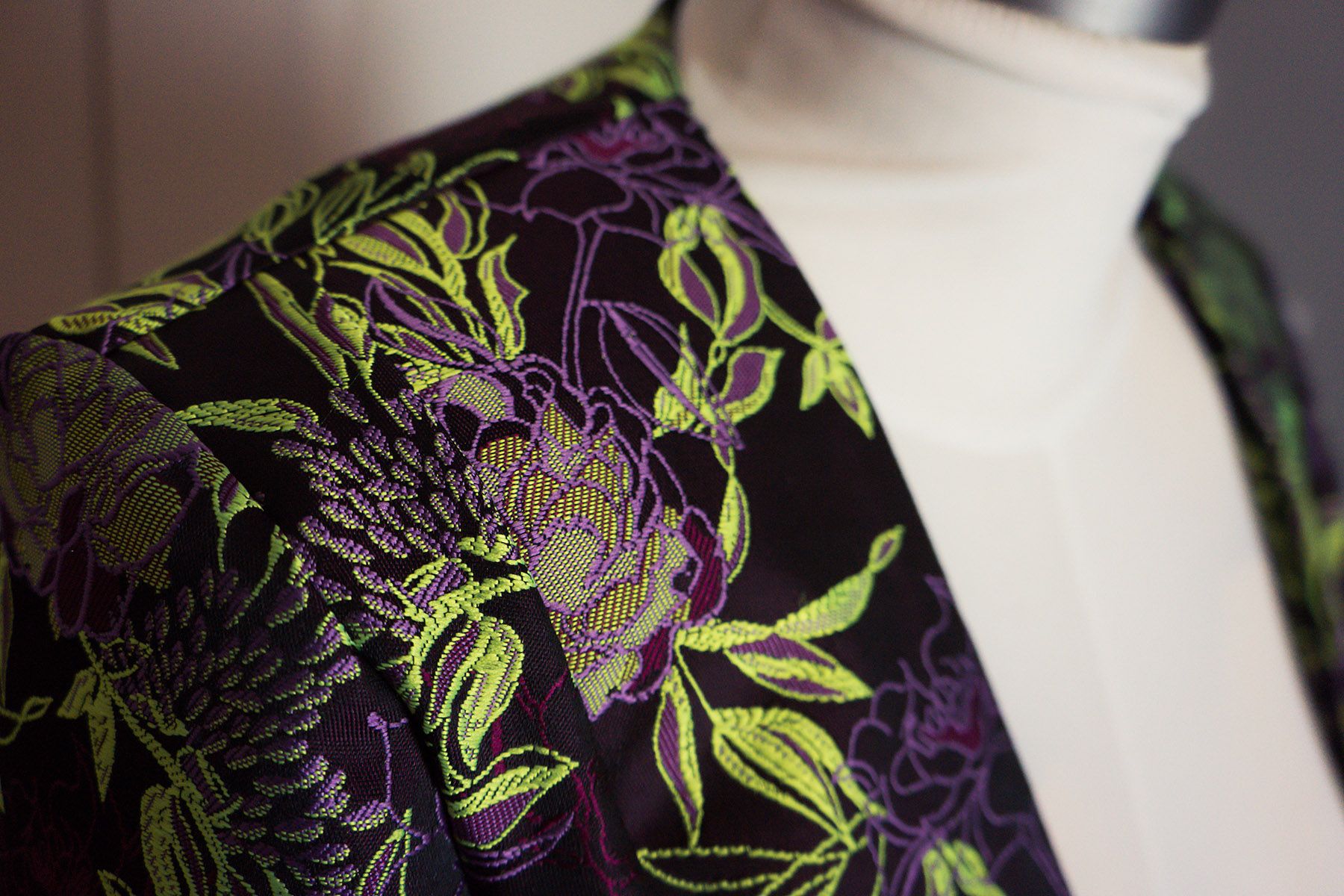
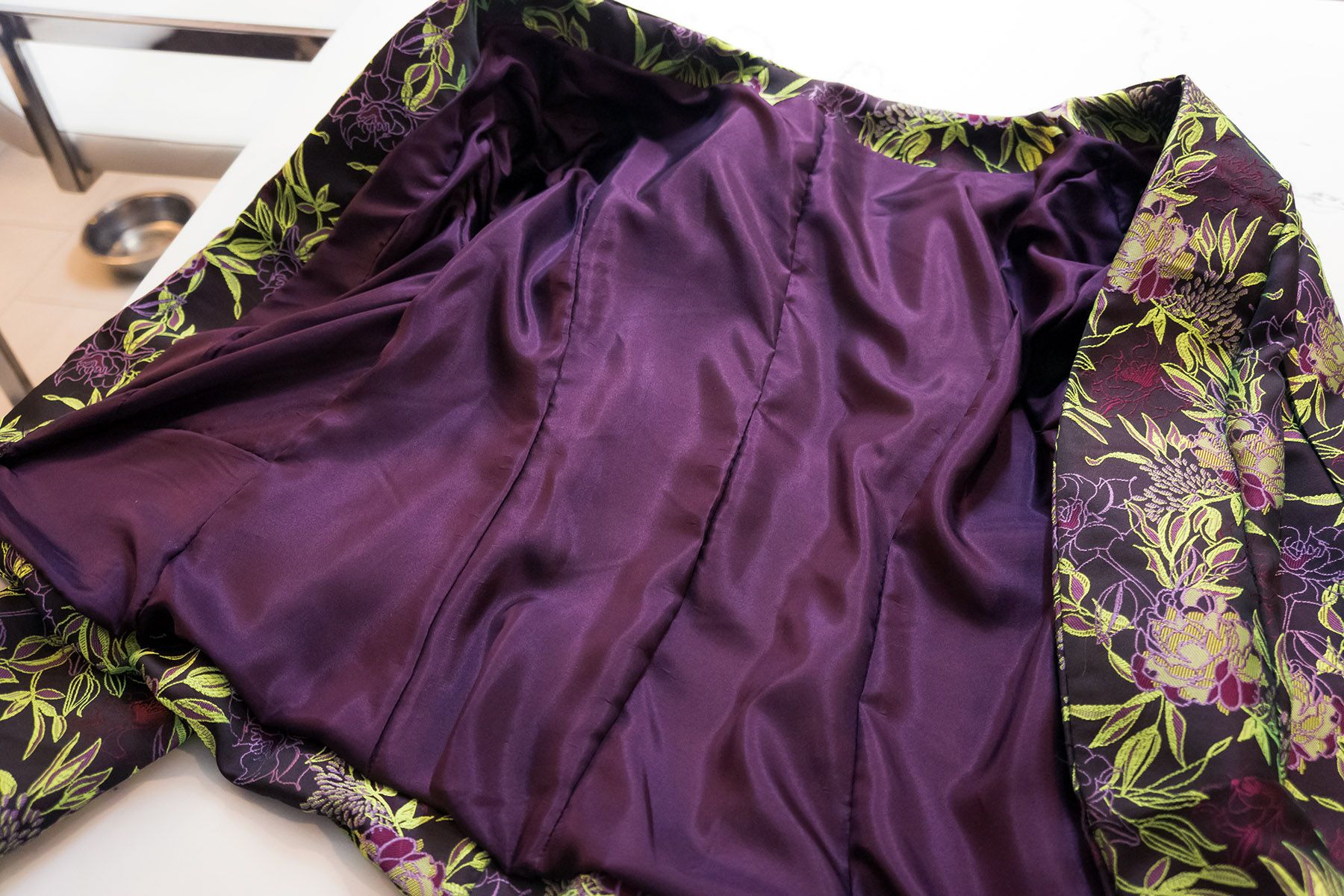
Pattern Choice
I LOVE blazers, so I was chomping at the bit to try and sew one myself. I was looking for a blazer pattern that fit my usual blazer tastes: no collar, fitted, hits at waist, lined. The Lekala 4983 pattern was the best option I found to fit those requirements (and even looks like some of the blazers I own!)
This is not my first Lekala pattern, so I knew what to expect. They are very reasonably priced, but directions are sparse.
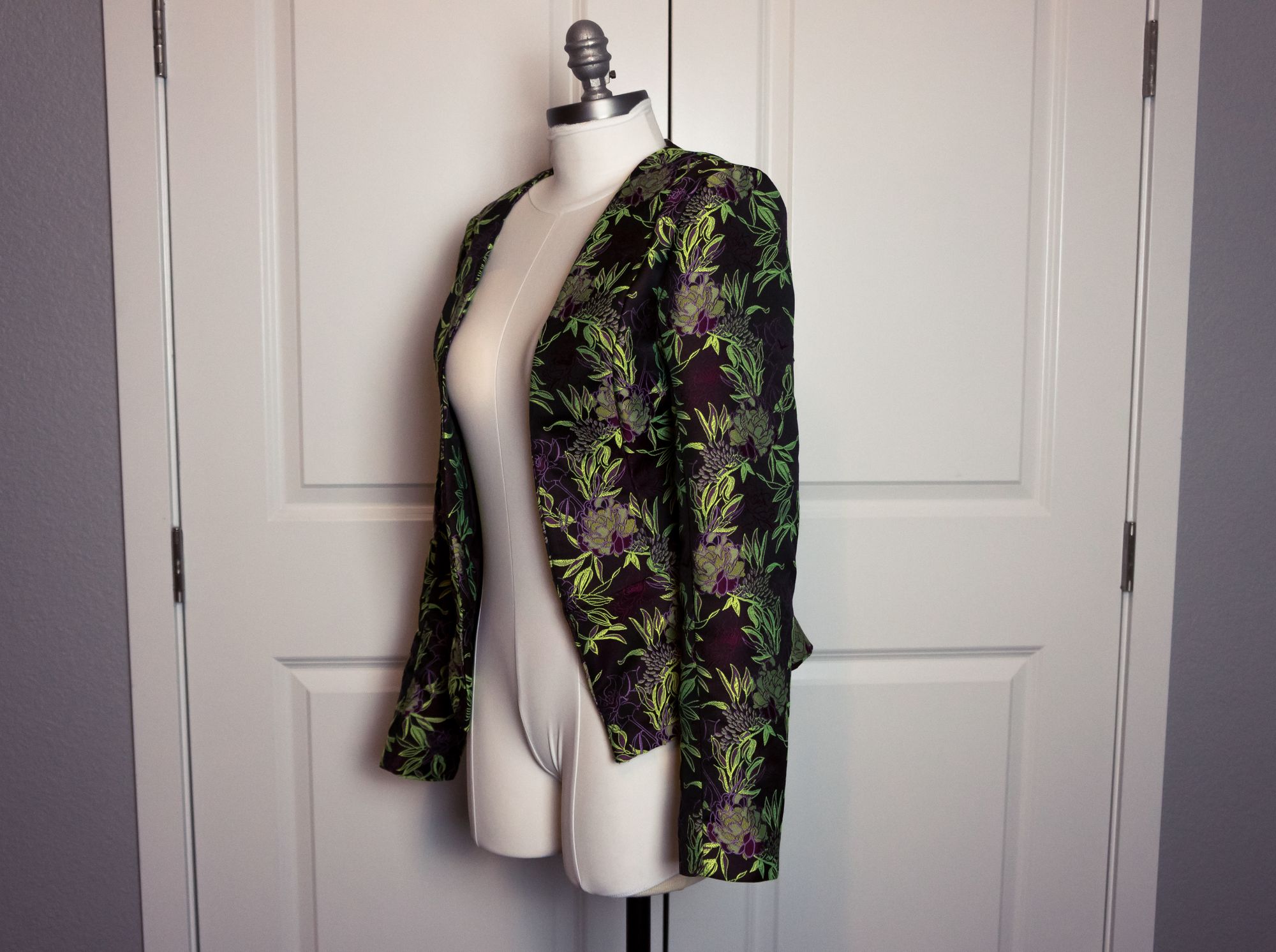
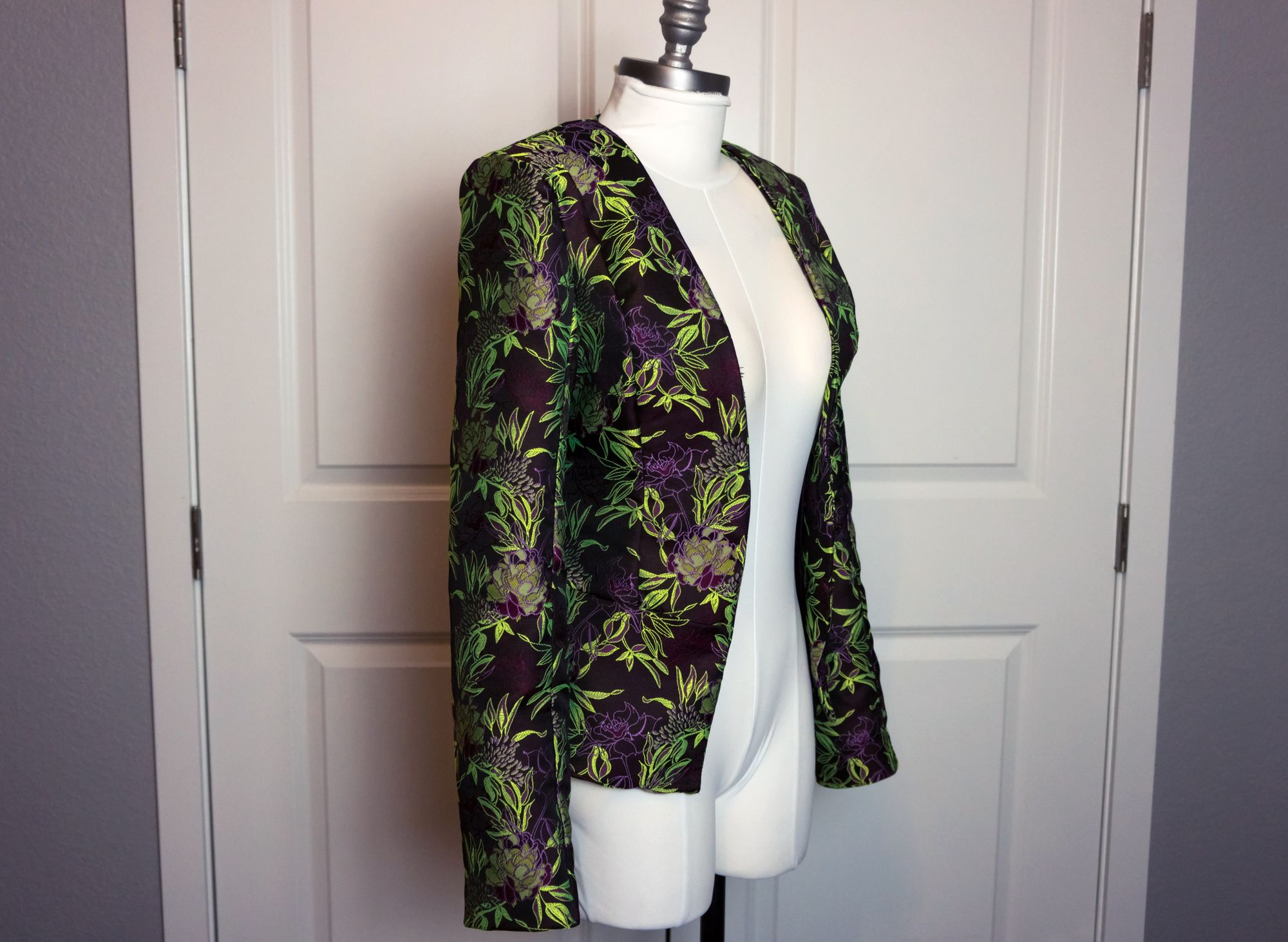
Fitting

When I made my first toile of the jacket, I knew the fit of the arms and shoulders would have to be adjusted. It was way too tight in the biceps and upper back (even over a thin t-shirt), and there was extra fabric on the chest.
Adding shoulder pads did help slightly, and then I spent hours altering the fit of the armscye and sleeves (which were 2-piece; a new concept to me). I think it was time well-spent because I am VERY happy with how that part of the garment turned out.
I have 2 sleeve-related resources to say a huge THANK YOU to:
- Understanding the Sleeve Part 1: The Fitted Sleeve Block (dresspatternmaking.com)
- Subtleties in Drafting: Sleeves (ikat bag)
I learned far more about fitting a sleeve than I ever thought possible from these 2 sites, but I’m glad I did. Even if you don't have time to read those posts, bookmark them for later!
These are my final patterns for the sleeve pieces, you can probably see how much tape there is on them as I cut and re-cut them to make small tweaks.

Cutting & Sewing
Jacquard was fairly easy to cut, however the silk habotai presented the usual challenges that silky fabrics do. I used the method of sandwiching between layers of tissue paper, and although it was time-consuming, I’m glad I put in that extra work because I would’ve had many more issues with the sizing of the lining if I didn’t do that.
There was an extra pattern piece that wasn’t labeled and I couldn’t find in the inventory of pieces in pattern instructions - but I think it was the bottom hem facing? The directions also said to cut out the lining on the same pattern as the outer fabric, but when I tried it for the toile it didn't fit well. I ended up following directions in High-Fashion Sewing Secrets from the World's Best Designers by Claire B. Shaeffer for how to line and bag a blazer, however those directions weren’t super detailed either (at least, not for lil’ beginner me).
Because jacquard and the habotai are both VERY prone to fraying, I used my Baby Lock Triumph serger to to overlock the seams.
Pressing the silk worked well, however pressing the jacquard was difficult; even with my iron on the highest setting it wouldn’t stay. It has got to be at least a decade old at this point and it is a cheap-y Panasonic iron with a retractable cord. I think it’s a good opportunity to upgrade ;)
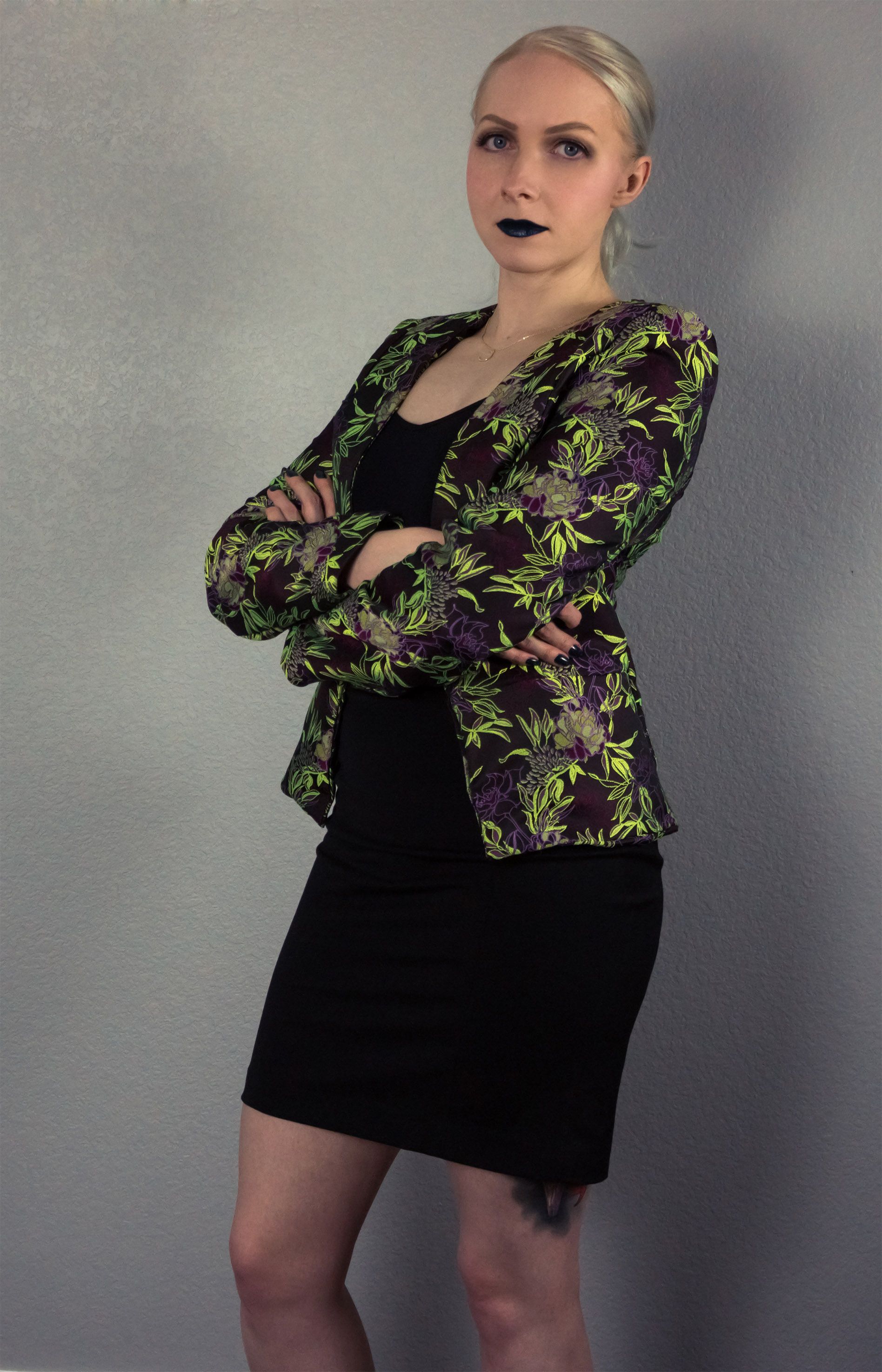
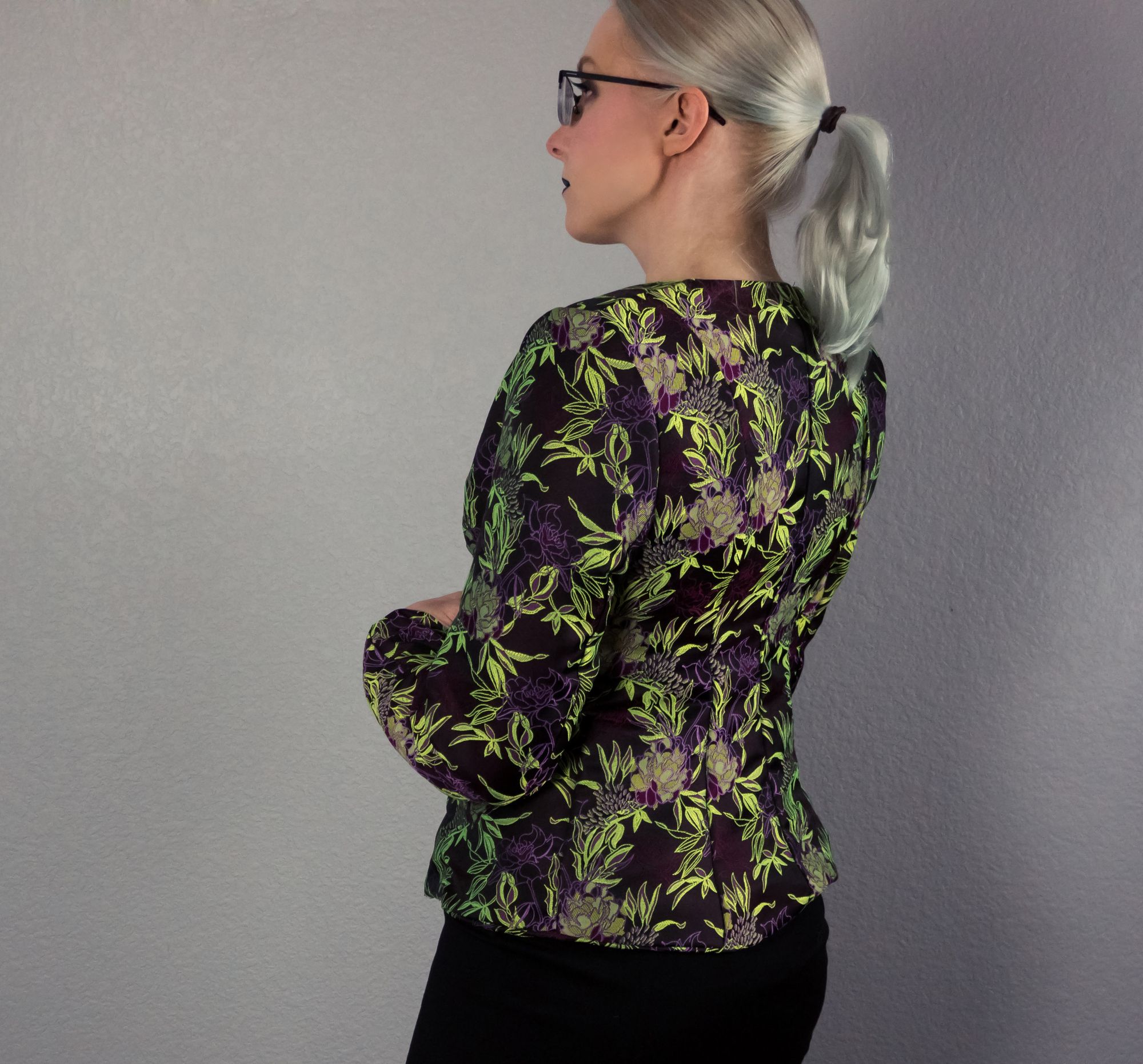

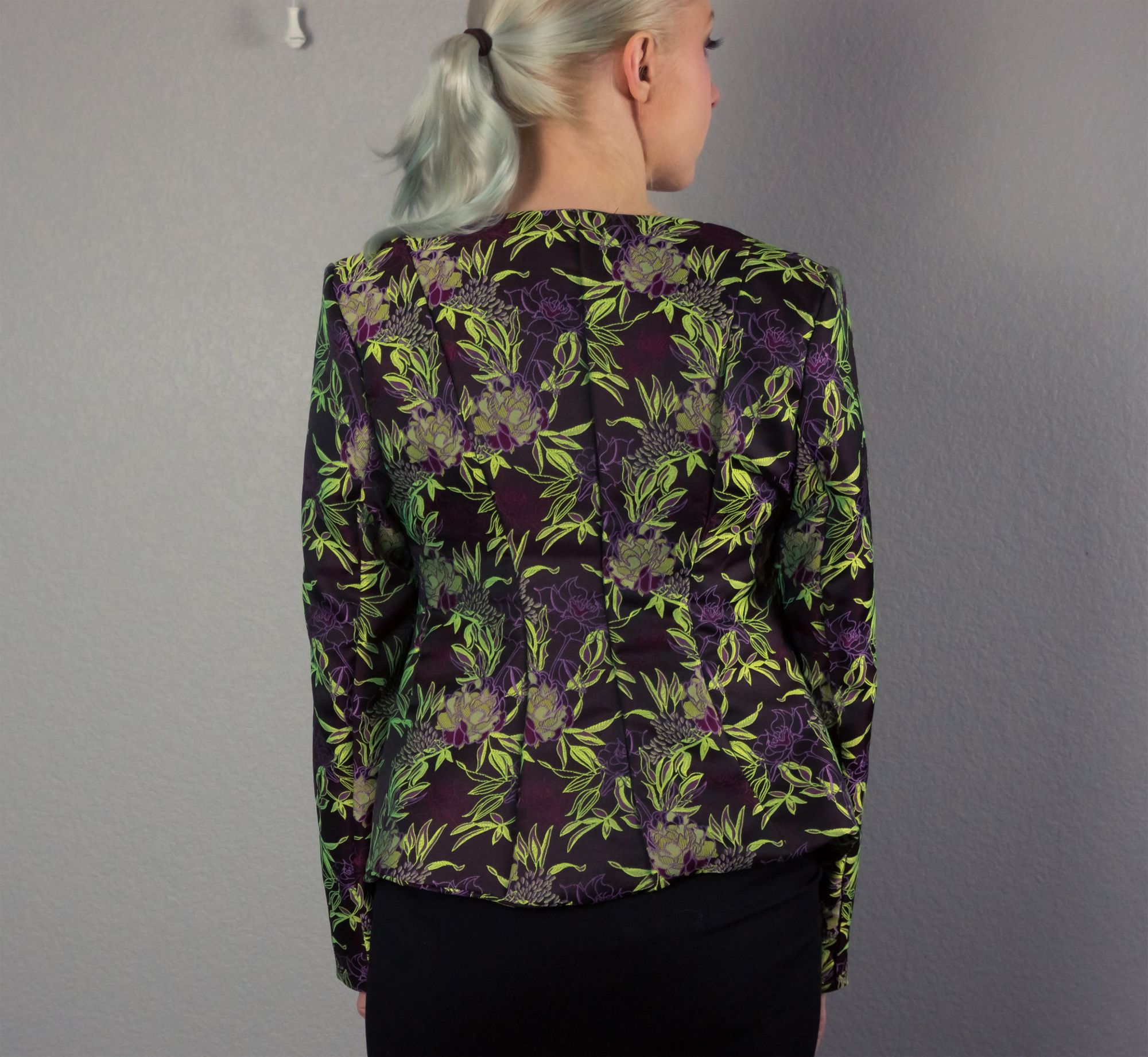
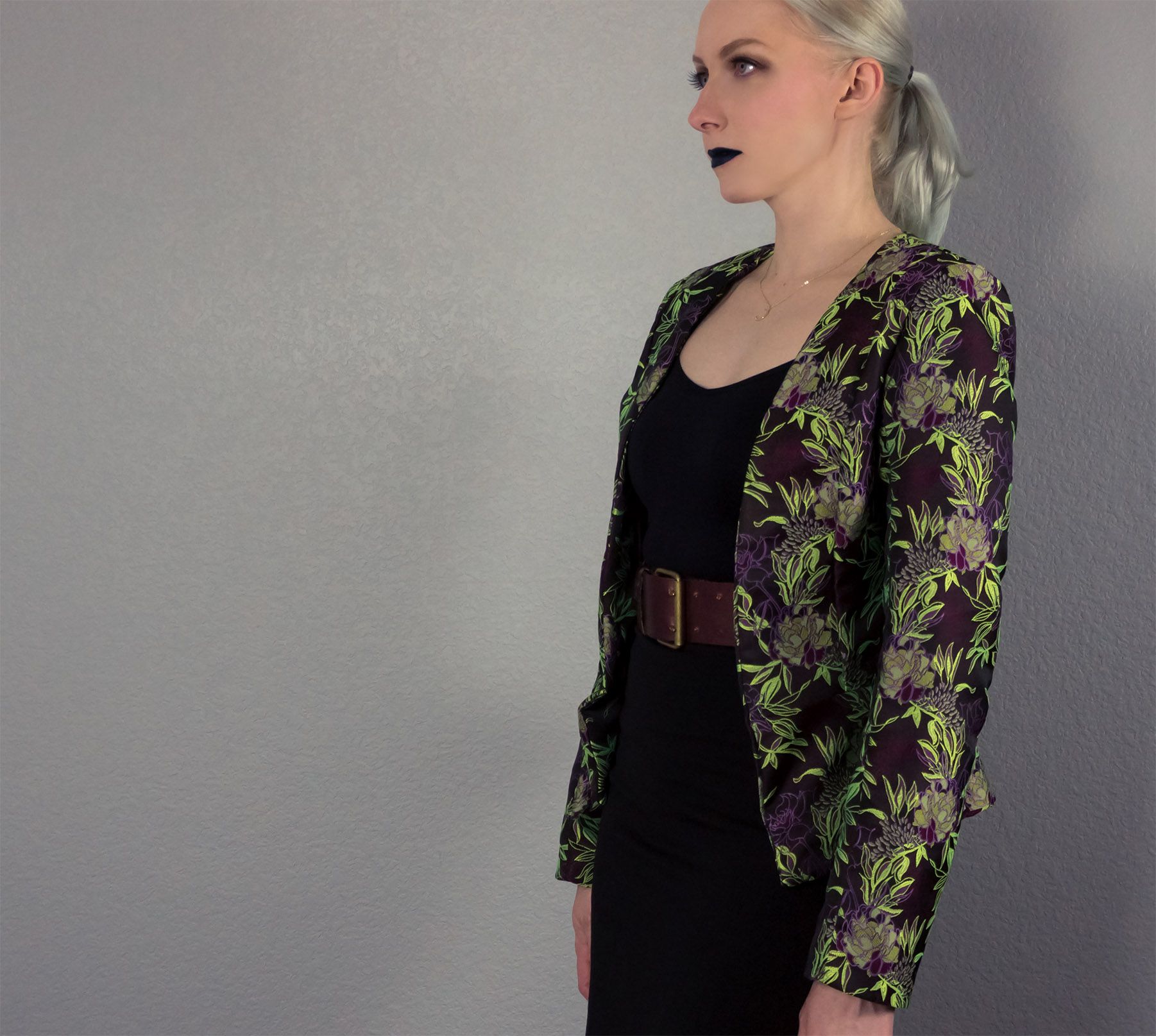
Lessons Learned
- I overestimated my skill level for this project (but what’s new?!) The outside of the blazer did turn out surprisingly well, however it all started to go south when I tried to make the lining myself. The pattern called for making a lining using the same pattern, but it did not work on my toile.
Next time I will try a blazer pattern that holds my hand through the process a little more - if you know of a collarless, lined blazer pattern with thorough instructions, drop it in the comments, please! - I should have made another full toile to make sure the lining fit correctly. I assumed I could make alterations to it on the fly, but I ended up with some extra tension lines because the lining doesn’t quite fit. You can see some of the waviness caused by ill-fitting lining, especially along the bottom:

- It is so worth it to spend time on sleeves and armscye fitting. You don’t have to re-make the whole toile, even just making one half (front/size/sleeve pieces) is immensely helpful.
Verdict
I would make this pattern again, once I'm a bit more skilled with drafting my own lining.

Comments powered by Talkyard.